Quiche Lorraine: Savory, Perfectly Temped, and Ready for Tomorrow
Quiche is one of the greatest make-ahead breakfasts I can think of. Meant to be served at room temperature—or even slightly chilled—you not only can make quiche ahead, you have to! That’s one of the reasons it’s so great for a celebratory morning breakfast. For a holiday like Mother’s Day, you don’t want to make breakfast, but you definitely want something special. Make this, then just reach into the fridge, grab a perfect quiche, and slice it up. Breakfast is served.
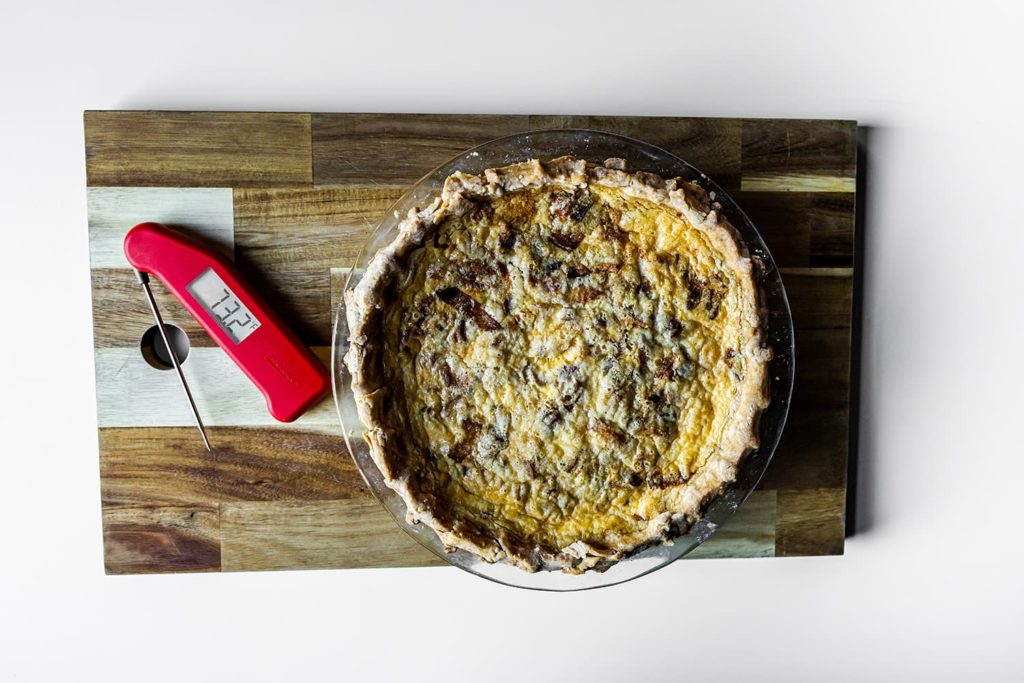
Now, I know quiche got a bad rap in the ’70s, but I just don’t understand why. How did a pie loaded with bacon and cheese earn the ire of the machismo crowd? Regardless of the hard time it had back then, quiche remains a stellar dish and one that lends itself well to low-stress get-togethers. Here we’ll walk you through a terrific recipe for quiche Lorraine (from Bon Appetít), including the temperatures you need to know to ensure a silky, luscious custard pastry instead of a pie filled with scrambled eggs.
Quiche basics
Quiche is, as stated above, a custard pie. Custard, of course, is a combination of milk or cream and eggs that is cooked to a desired thickened consistency, and the cream is of utmost importance here. Without cream, you just get … eggs. And while there’s nothing wrong with a frittata, per se, it just isn’t the same as a quiche. The custard cooks up into a silky, exquisite texture.
Or at least, it does if you don’t overcook it. As with all custards, quiche filling is picky about how it is heated. Overcooking it will curdle the eggs. And of course, you know what I’ll say next: to prevent this minor tragedy, temp your quiche. The custard in a quiche is done between 165°F and 185°F (74°C and 85°C), with some variation coming into temp based mostly on preference. A fast and accurate Thermapen® is perfect for the job, and will help you make perfect quiche the first time around.
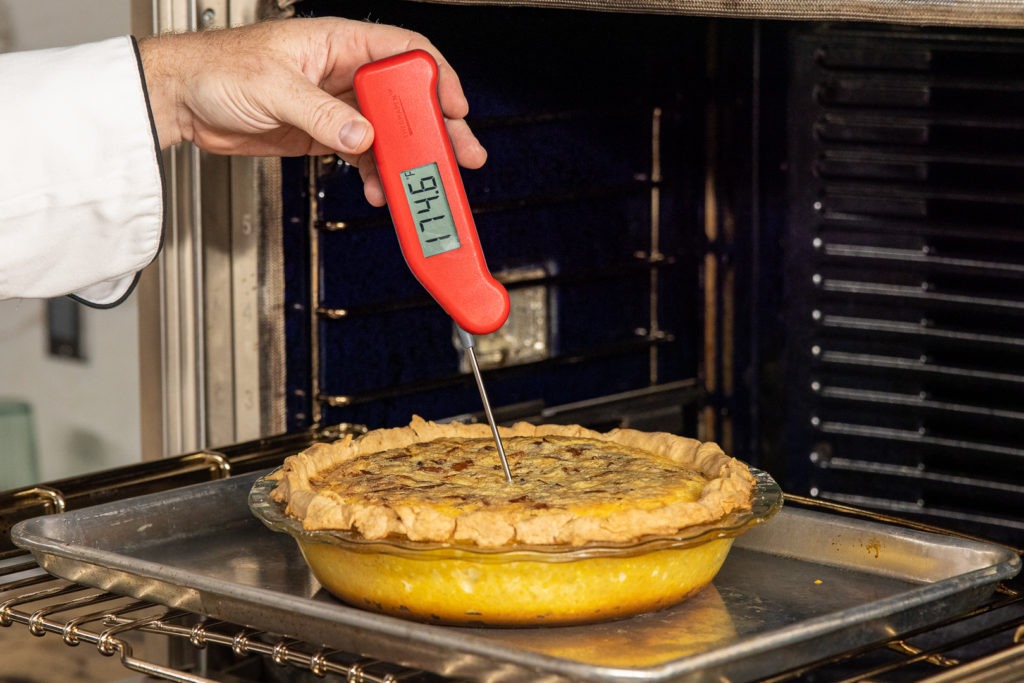
Quiche Lorraine gains a hearty meatiness from bacon, in this case, cooked together with shallots, thyme, and butter.2Quiche Lorraine was originally known as quiche au lard for its inclusion of bacon.[/footnonte] Nutty-tasting Gruyere cheese also goes in, which is an absolute treat.
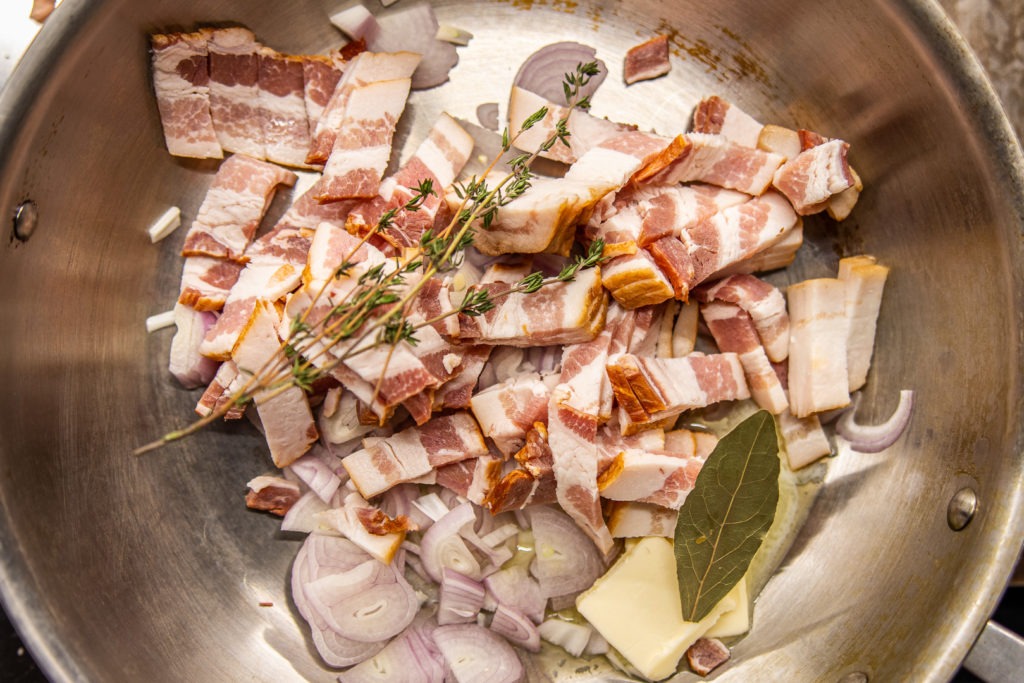
What’s the “Lorraine” for in quiche Lorraine?
The word ‘quiche’ most likely comes to us through the German word Kuchen, meaning cake or tart, and comes mostly from the Lorraine region of France (as in Alsace-Lorraine, a region that has gone back and forth between being German and being French four times since 1870). Lorraine is not the name of the person who invented the dish!
Crust for quiche—blind baking
One important thing that separates a quiche from a frittata is a crust. Any good pie crust will work for this, if you have a good family recipe for one. But no matter the crust, it’s important to blind-bake it. Blind baking is pre-cooking the crust without the filling. This allows it to set up and get flaky, while also setting up a bit of a barrier against the liquid of the custard. The crust is panned up, baked with pie weights to keep it from bubbling, and finished without the weights to brown somewhat. Only then can it be filled and cooked to completion.
Though it takes some time to put together initially, when this this ready-to-eat breakfast hits the table, people are going to love it. And if you cooked it to temp with your Thermapen, it will have an amazing texture that everyone will comment on and love. Plus, not having to make breakfast is a gift that your today-self can give your tomorrow-self, and your tomorrow-self will be very grateful, indeed.

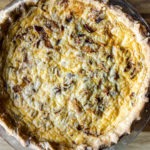
Quiche Lorraine recipe
Description
Hearty, silky quiche Lorraine based on the recipe from Bon Appetít.
Ingredients
- 1½ tsp kosher salt
- 1 tsp sugar
- 2 C all-purpose flour, plus more for surface
- 5 Tbsp chilled unsalted butter
- 3 Tbsp chilled lard or shortening
- 8 oz thick-cut smoked bacon, cut into ½-inch pieces
- 3 large shallots, thinly sliced
- 3 Tbsp unsalted butter
- 2 sprigs thyme
- 1 bay leaf
- 3½ C half-and-half
- 8 large eggs (best if left to come to room temperature)
- 2 tsp kosher salt
- ¼ tsp cayenne pepper
- Pinch of freshly ground nutmeg
- 2 oz Gruyère, finely grated
Instructions
Prepare and blind-bake the crust
- Combine the 2 C flour, the salt, and the sugar in the bowl of a food processor. Whiz together. Cut the chilled butter into small chunks and add to the flour mixture. Pulse the processor until the mixture looks like coarse meal.
- Drizzle 6–7 Tbsp ice water into the processor while it’s running. Pulse until the dough is crumbly and holds together when squeezed.
- Knead the dough a few times on your work surface. Press it into a disk, wrap it in plastic wrap, and chill it in the refrigerator for an hour.
- Preheat your oven to 375°F (191°C).
- Roll out the dough to a 14″ round, place it in a deep 9″ pie dish, tuck it into place, fix any tears, and crimp the edges.
- Line the crust with parchment paper, fill it with pie weights (dried beans or rice also work great!) and bake about 25–30 minutes, until the edges are just starting to brown.
- Remove the pie weights and parchment, then continue baking until the center starts to brown, about 15 more minutes.
- Let the crust cool.
Make the filling
- While the crust is chilling or baking, work on the filling.
- Place the sliced shallot, the bacon, bay leaf, thyme sprigs, and butter in a pan. Cook over medium-high heat until the butter is bubbling. Turn the heat down to low and cook everything slowly until the shallots are soft and the bacon is browned somewhat.
- Let the mixture cool somewhat, remove the thyme sprig and bay leaf, then strain the fat out. (I recommend saving that seasoned butter/fat for other uses!) Set the bacon/shallot mixture aside.
- Heat the half-and-half in a saucepan until it just starts to bubble. Remove from heat and allow to cool.
- Heat the oven to 325°F (163°C).
- Put the eggs in a blender and blitz until frothy. Add the salt, cayenne, nutmeg and half-and-half, and blend until smooth.
- Put the pie pan with the crust on a rimmed baking sheet (in case any filling spills over). Put all the cheese in the bottom of the pie crust, spreading it evenly. Spread out the bacon/shallot mixture on top of the cheese.
- Place the pan on the oven middle oven rack, and pour in the egg mixture. (Pouring it in while the pan is on the oven rack helps prevent spills on the way to the oven.)
- Bake. Start checking the temperature in the center of the quiche with your Thermapen at about 55 minutes. It may take as long as 75 minutes to get up to 165–185°F (74–85°C). The center will still seem somewhat jiggly.
- Remove the quiche from the oven and allow to cool to room temperature on a wire rack on the counter. Refrigerate, or serve once cooled. (If serving tomorrow morning, take it out of the fridge an hour or so before serving so it can come up to room temperature.)


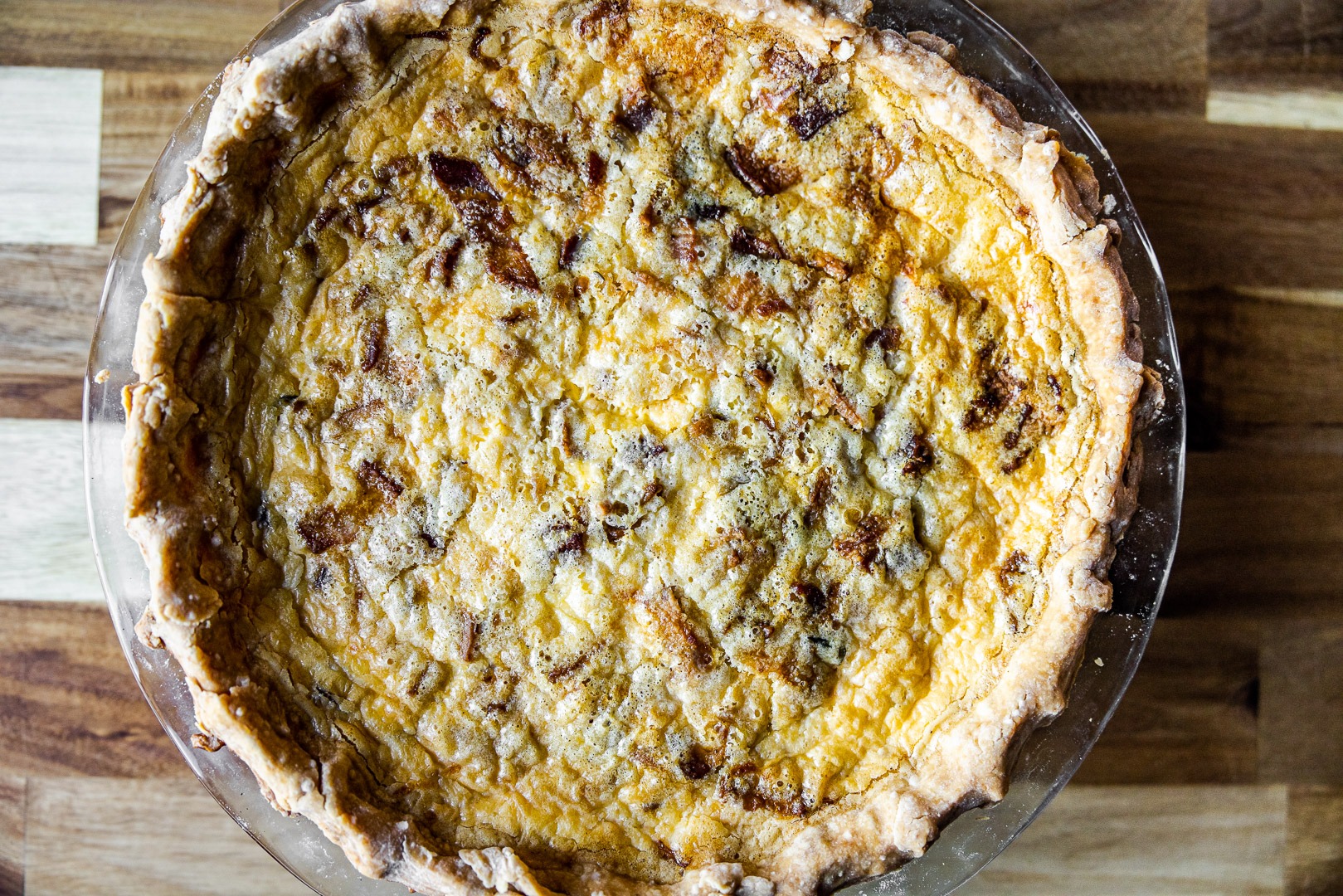
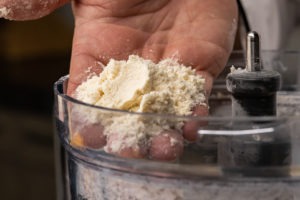
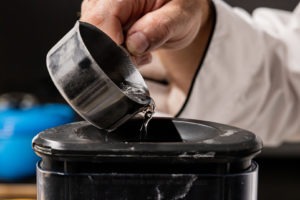
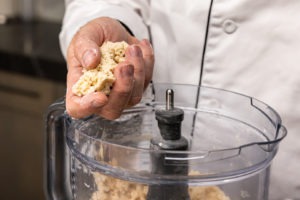
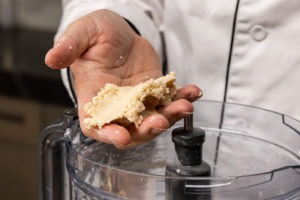

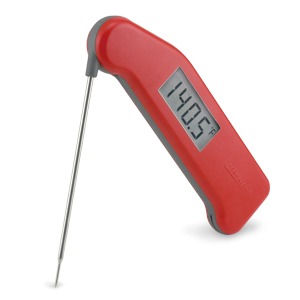
Wow! This sounds amazing. I will need to try it. Can you eat it warm or is it more traditional to serve it chilled?
Barb,
It’s traditionally eaten at room temp, but no one will come after you if you warm it up a little.
I just made a 9” quiche with 4 eggs and 1 cup half and half, and was full to the brim. I can’t fathom how this much liquid would not overflow.
We may be using a larger container! But I’m glad you liked the result.
Hello! What do you mean “just starts to bubble” when heating the cream. Around the edges or boiling? Thank you!
Around the edges. Good clarification point.